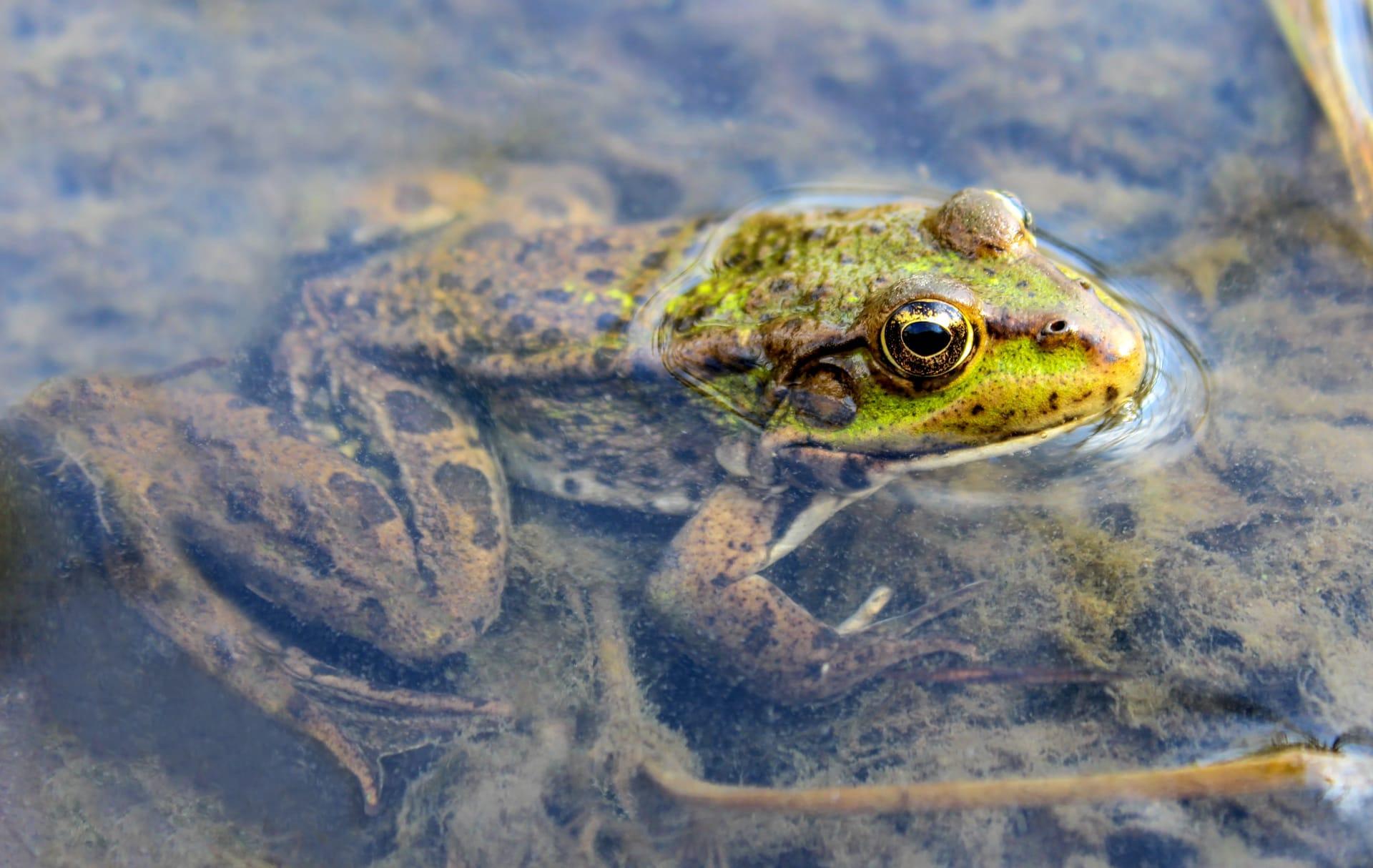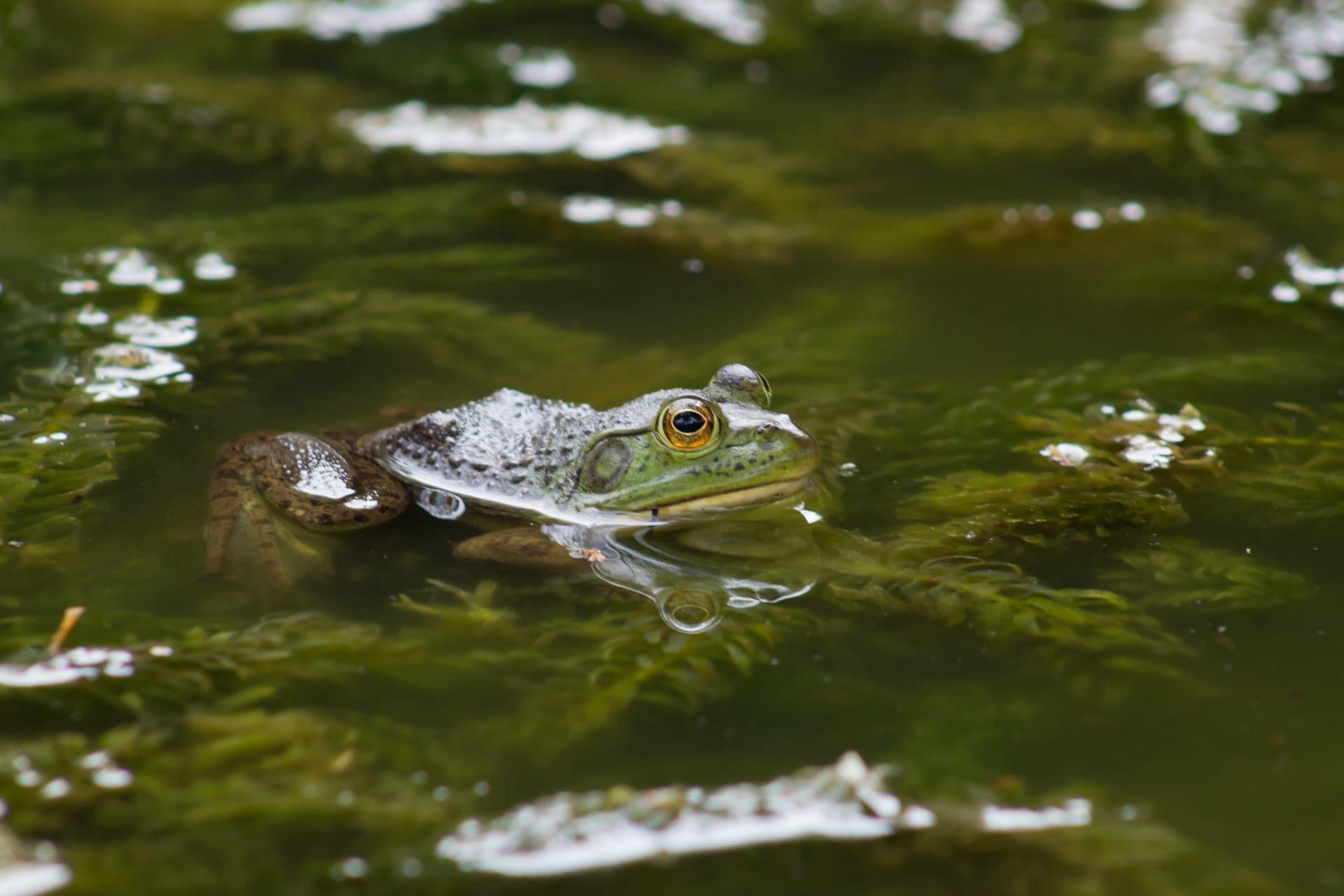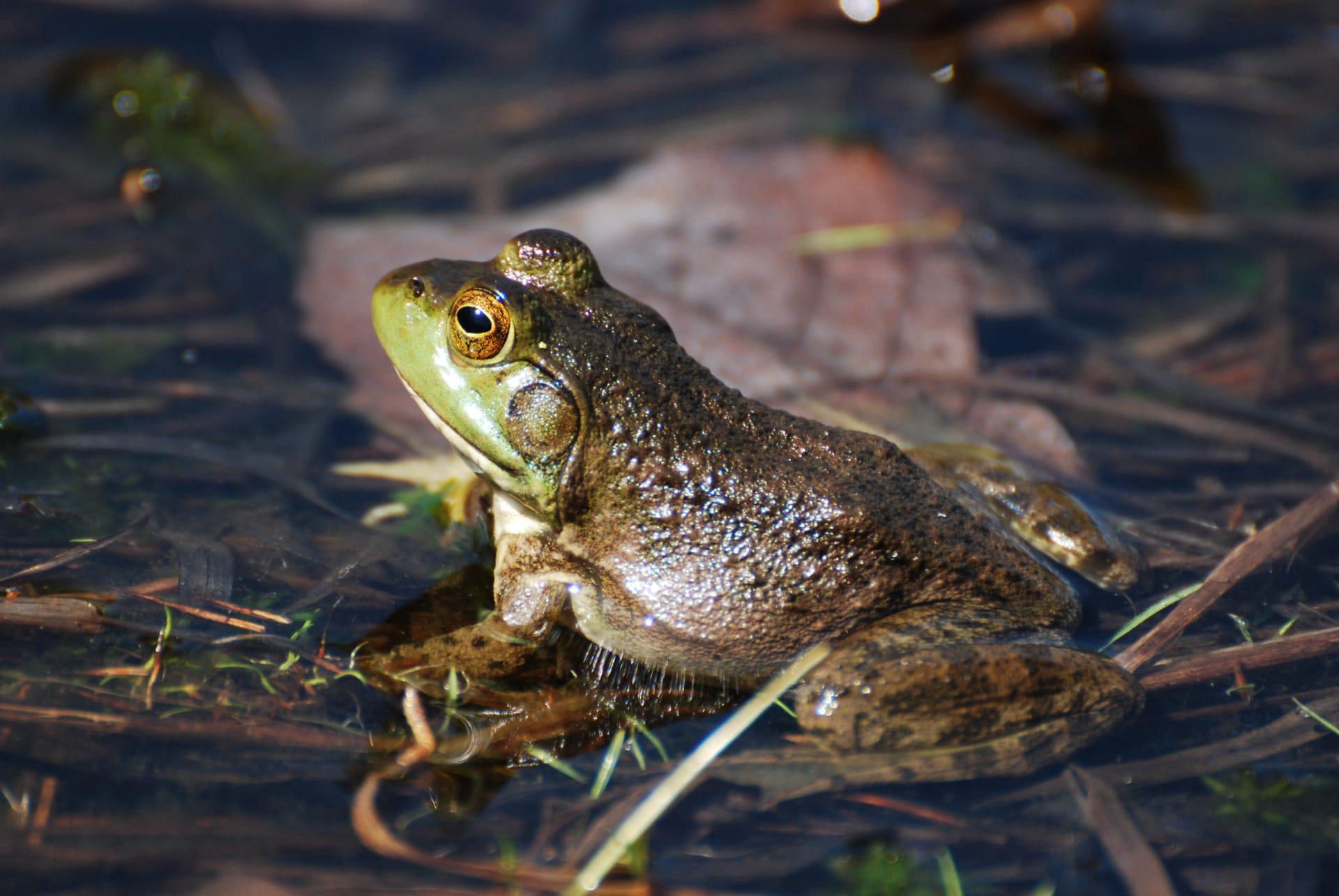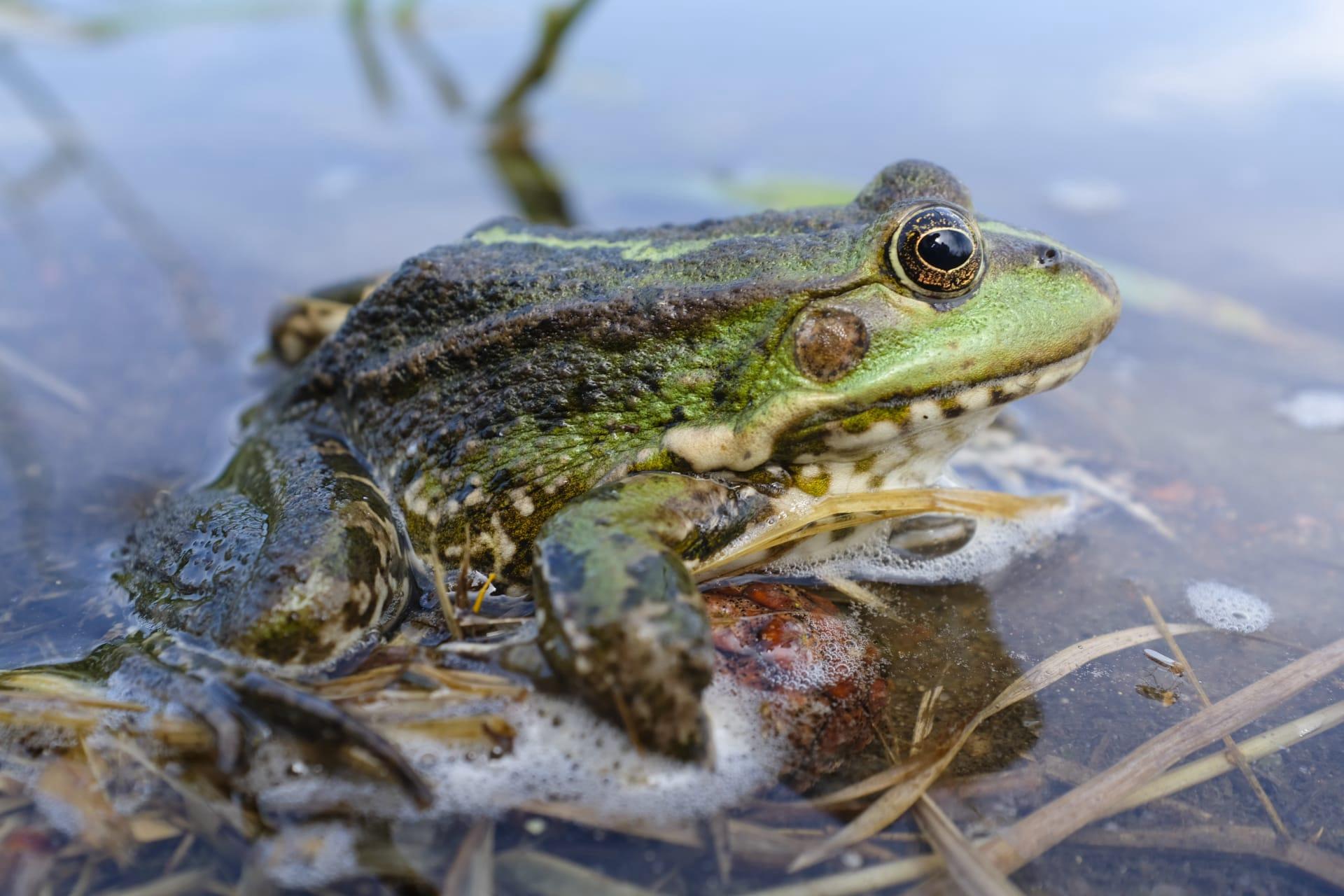American Bullfrog
- Home /
- Mini Encyclopedia /
- Animal /
- American Bullfrog
1
The American Bullfrog, scientifically known as Lithobates catesbeianus, belongs to the family Ranidae, which comprises true frogs. Its species classification places it within the order Anura, commonly known for amphibians that lack tails as adults. Notably, the American Bullfrog is one of the largest frog species in North America, distinguishable by its robust size, often reaching lengths of up to 8 inches (20 cm).
Native to eastern North America, the American Bullfrog has expanded its range significantly due to human activities. Initially confined to the east of the Rocky Mountains, it's now found across the United States and into parts of Canada. These frogs thrive in a variety of aquatic habitats, from large lakes and ponds to smaller water bodies like ditches and slow-moving streams. Their adaptability to different environments has facilitated their spread, even reaching regions like California and the Pacific Northwest.

2
Question: Is it true that American Bullfrogs can only survive in freshwater environments?
Answer: This is a common misconception. While American Bullfrogs primarily inhabit freshwater ecosystems, they exhibit a remarkable tolerance for brackish water – a mix of salt and freshwater. Studies have shown that American Bullfrogs can survive in water with salinity levels up to around 1.8%, which is significantly saltier than typical freshwater but less saline than ocean water. This adaptability helps them thrive in various habitats, including estuaries and river deltas where freshwater and saltwater mix.

3
The American Bullfrog employs a range of survival strategies to thrive in its environment. One key aspect is its reproductive strategy. Female bullfrogs can lay up to 20,000 eggs in a single breeding season, increasing the chances of offspring survival. Their diet is another survival tool; they are opportunistic feeders, consuming almost anything they can overpower, from insects and small mammals to birds and other amphibians.
Furthermore, their vocalization plays a crucial role in territory establishment and mating. The males' deep, resonant calls, which resemble a bull's bellow (hence the name 'bullfrog'), can be heard over long distances, attracting females and deterring rival males. Their skin also provides a protective mechanism, secreting mucus that helps in moisture retention and offers a degree of protection against pathogens.

4
In the ecosystem, American Bullfrogs play a multifaceted role. As predators, they help control the population of insects and smaller animals, maintaining a balance. However, their voracious appetite can have negative impacts when introduced to non-native environments, where they can outcompete and prey on local species, disrupting local ecosystems.
Their role as prey is equally important. Bullfrogs serve as a food source for a variety of animals, including birds, fish, and larger mammals. This makes them integral to the food web in their native habitats. Additionally, their tadpoles, which live in water for up to two years before maturing, provide food for aquatic predators. This dual role as predator and prey highlights their significance in maintaining ecological balance.

5
Film: "The Secret Life of Frogs," a documentary released by a Canadian production in 2018, delves into the world of frogs, including the American Bullfrog. It explores their life cycle, habitat, and the challenges they face, providing a captivating insight into these amphibians.
Book: "Frog and Toad Biology and Conservation" by James P. Collins and Martha L. Crump, published in the United States in 2009, offers an in-depth look at frog species including the American Bullfrog. It discusses their biology, behavior, and the conservation issues facing these amphibians.
Book: "American Bullfrogs: Life History and Ecology" by David W. Green, published in the UK in 2014, specifically focuses on the American Bullfrog. It provides comprehensive details on their ecological role, life history, and the impact of their invasive spread in non-native habitats.